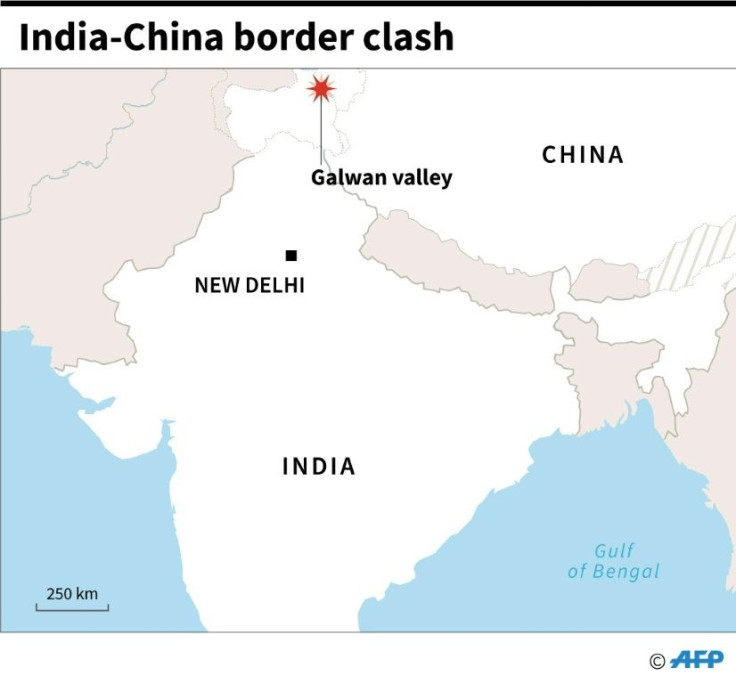India-China Border Clash: US Intel Says 35 Chinese Troops Killed
KEY POINTS
- A meeting between Chinese and Indian troops meant to decide about withdrawing from the Galwan River Valley resulted in death of 20 Indian soldiers and 35-43 Chinese soldiers
- An American intelligence source said China does not divulge casualty numbers
- Tensions between the U.S and Beijing have risen in recent months over issues including China’s ambitions in the East and South China seas
It appears the informal agreements made in Wuhan, China, in 2018 and Mahabalipuram, India, in 2019 between Indian Prime Minister Narendra Modi and Chinese President Xi Jinping to maintain peace and tranquility may have fallen by the wayside.
A meeting between Chinese and Indian troops that was meant to find a way to withdraw both of their presences safely from a mountainous region in the Galwan River Valley has resulted in violence and death. No shots were fired but the use of batons and knives and falls from the steep terrain killed 20 Indian soldiers and between 35 and 43 Chinese soldiers, depending on the news source.
News sources from China, India, and the United States have varying accounts as to the skirmish:
- Chinese state media described the incident Monday night as, "the most serious clash between Chinese and Indian soldiers so far." They confirmed casualties but offered no further details about them. An editorial in the state-run Global Times said the tensions were caused by "arrogance and recklessness of the Indian side" and officials there believed "their country's military is more powerful than China's"
- Anonymous Indian government sources told The Times of India that 20 Indian army personnel and 43 Chinese troops had died. The English-language daily newspaper reported harsh conditions with sub-freezing temperatures at the high altitudes. It also reported the Indian government claimed the face-off "was the result of an attempt by the Chinese side to unilaterally change the status quo of the region.” The newspaper cited a Chinese military spokesperson as saying, “China always owns sovereignty over the Galwan Valley region”
- The U.S. government had not publicly commented on the skirmish as of Tuesday afternoon, but one American intelligence source put the number of Chinese deaths at 35. According to the U.S. assessment, the Chinese government does not divulge casualty numbers as it views them as a “humiliation” for its armed forces that might embolden other adversaries.
The Global Times expressed the Chinese Communist government’s ire toward the U.S for its growing support of India. The publication said, "The U.S. has wooed India with its Indo-Pacific Strategy, which adds to the above-mentioned misjudgment of some Indian elite, New Delhi must be clear that the resources that the U.S. would invest in China-India relations are limited. What the U.S. would do is just extend a lever to India, which Washington can exploit to worsen India's ties with China, and make India dedicate itself to serving Washington's interests."
The tensions between the U.S and Beijing have risen in recent months over many issues, including China’s increasingly bold ambitions in the East and South China seas. The U.S. officials said Beijing took advantage of the global unrest caused by the COVID-19 ongoing pandemic. But efforts by the U.S. to embrace India were already underway.
The Trump administration has dramatically ramped up relations with New Delhi, including growing its trade relations and shifting its military policy. The U.S. in 2018 renamed the United States Pacific Command to "Indo-Pacific Command" to put its focus more on India and away from its regional rivals, including China and Pakistan.

© Copyright IBTimes 2024. All rights reserved.





















